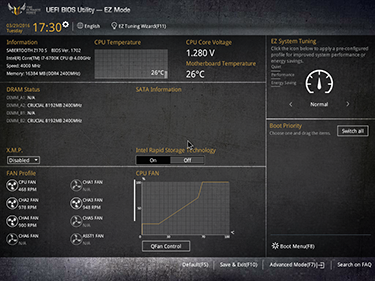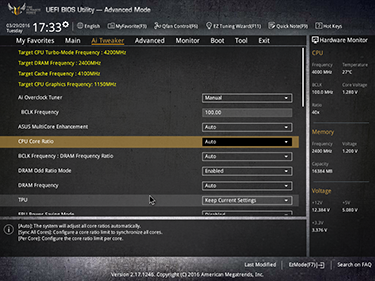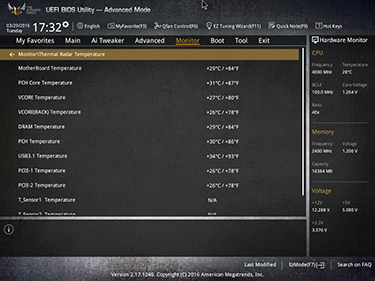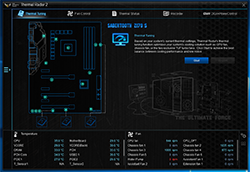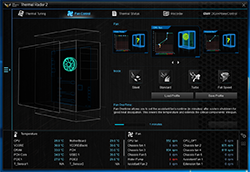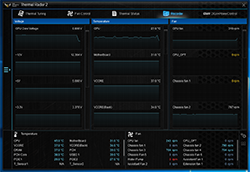Firmware
The BIOS is very familiar to anyone who has used an Asus board in the last two years, and the company usually skins it a particular colour to denote the range. The initial boot-up screen, on the left, provides a wealth of basic information regarding the vital stats of your system. One way to know this is a Sabertooth board is to peek at the number of fans monitored.
To be fair to Asus, you can do a healthy amount of tweaking without delving into the main firmware itself when pressing F7. But if you do, almost every imaginable parameter can be changed. Auto does a good enough job for the most part, but be warned that the firmware takes a few liberties with how it clocks the cores on a Core i7-6700K - we had to manually adjust each one so that inflated scores weren't present.
Asus installs a chip to increase the base-clock range available when compared to basic boards, but so does everyone else who lists an enthusiast-friendly motherboard in its arsenal. You will run out of CPU headroom way before the voltages or settings top out. This means there's little to separate mainstream and enthusiast boards from a firmware point of view.
We see the fan-tuning page, or Qfan, to be more relevant to this board. You can opt for either one of four preset profiles or go down a calibration route. What's good is that it works on all fans, and if you want absolute control then a manual mode enables pushing and pulling of the curve, as shown above. Perhaps such fine-grained control isn't necessary in a firmware now that most manufacturers bundle in the equivalent utility for Windows, but it doesn't hurt to see how your system is doing on first boot of new hardware.
Asus does indeed have a weighty (125MB), all-in-one software package, AI Suite 3, that includes a plethora of utilities to compliment the board's features. Keeping a clean build, we chose two, Thermal Radar 2 and USB 3.1 Boost, installed manually. Note how what you see in BIOS is also present here.






